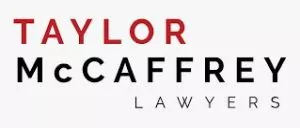- with Inhouse Counsel
- in United States
- with readers working within the Construction & Engineering industries
We have entered times of uncertainty and nobody likes uncertainty, including the construction industry. For simplicity there are generally two types of contracts in the industry:
1 – Cost Plus
These are contracts wherein an agreement is made between a project owner and a contractor to reimburse the contractor for expenses incurred andto add a specific additional payment for their profit. This profit is usually stated as a percentage of the contract's full price. These types of contracts are primarily used in construction for projects where the project owner reduces some of the contractor's risk related to expenses, thereby providing the contractor with a degree of flexibility. The final cost of the project is determined when the contractor provides to the project owner proof of all related expenses, including direct and indirect costs. To a contractor, they are immune to any increase of expenses because they in theory will be reimbursed for them and if anything, the contractor benefits if the costs go up because they earn more money if it is based on a specific profit proportional to the full value of the contract. This begs the question as to why would a project owner want to enter into a Cost Plus contract? These are usually entered into by a project owner if there are budgetary restrictions or if the scope of the overall work cannot be properly estimated by either the contractor or the project owner. There are various types of Cost Plus contracts and there are advantages and disadvantages for each which are beyond the scope of this article.
2 – Fixed Price Contracts
These are contracts where the two parties agree to pay upfront to a specific cost regardless of the actual expenses incurred by the contactor. Now with grave uncertainty caused by either tariffs or the potential for tariffs (or if so, to what degree?) as to what those expenses will be, it is obvious that contractors will not be inclined to accept those risks. They would feel that that it should be the project owner that needs to accept those risks.
Conclusion
Does this mean that fixed price contracts are dead? Not necessarily, but will there be pure Fixed Price contracts? Probably not unless they are priced at a rate with an extreme buffer for a potential increase in expenses. What will probably happen until there is some certainty in the market (which I suspect will be at the minimum of four years out) is a hybrid of some sort with a share of the risk being spread in some proportional manner between the contractor and the project owner such as a cap on expenses. This will require increased negotiations between a contractor and a project owner to reach an agreement that will be acceptable to both. This makes it more critical than ever to have lawyers such as us involved in not only drafting a suitable contract but to be involved in any negotiations as well.
The content of this article is intended to provide a general guide to the subject matter. Specialist advice should be sought about your specific circumstances.


